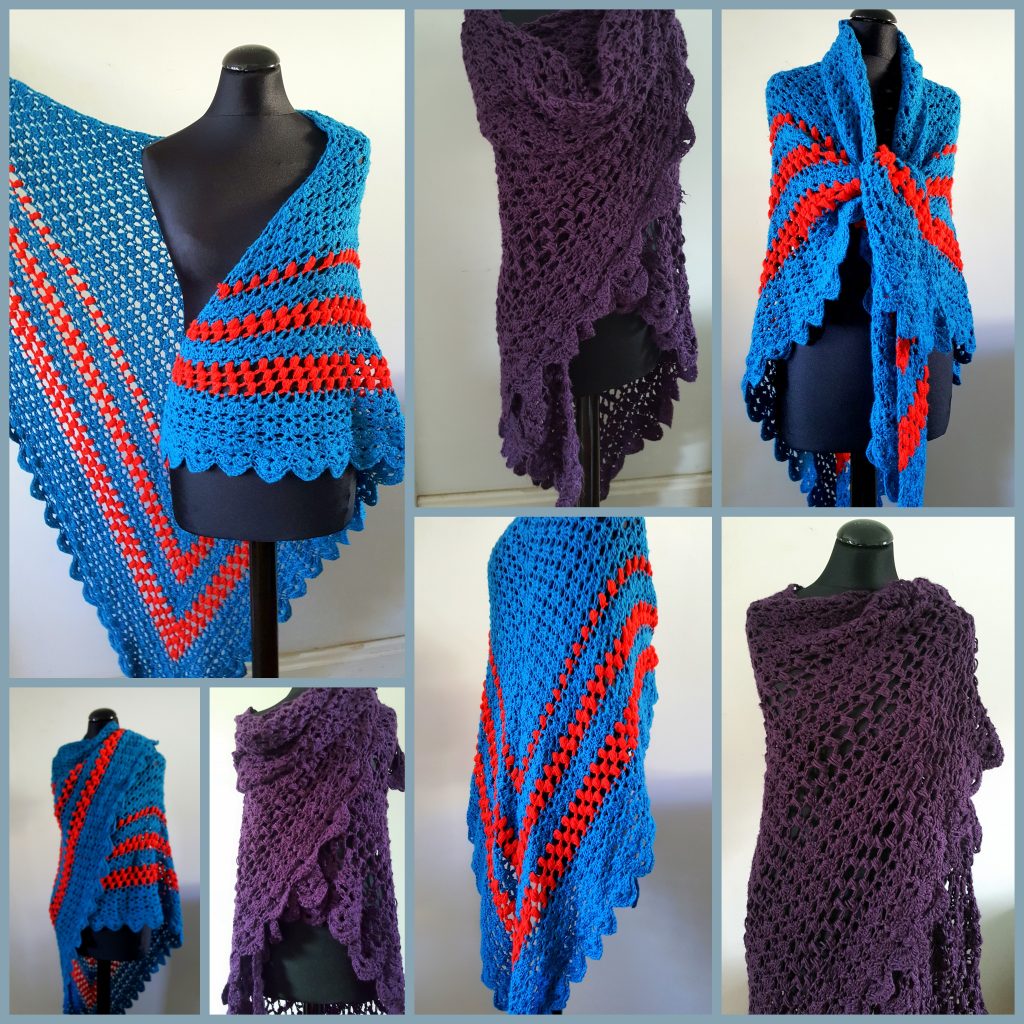I’m very excited. I’ve just published my first ‘paid for’ pattern on Ravelry. The Manchester Shawl is available to everyone here: buy now with Ravelry (and PayPal)
 Manchester has figured heavily in my life – I was born there, as my Aunt crocheted a traditional granny square shawl in the waiting room for my mother to wear during early morning feeds. We moved frequently over twenty years, but after every move away we always moved back to Manchester – to within 2 streets of where we lived before in fact!
Manchester has figured heavily in my life – I was born there, as my Aunt crocheted a traditional granny square shawl in the waiting room for my mother to wear during early morning feeds. We moved frequently over twenty years, but after every move away we always moved back to Manchester – to within 2 streets of where we lived before in fact!
That original shawl is now mine, but much like me starting to fray around the edges and show it’s age. It has been worn around my mother and me as a baby, it’s been a superhero cape, a den, a secure ‘hiding place’ and a portable hug. It’s be worn in all weather, dragged through mud, tossed carelessly in bags and used to wipe benches dry… So I needed a new shawl that could withstand abuse required.
Luxury yarns were right out from the start, and the yarns I used are best acrylic – lovely soft modern squishy machine washable acrylic. The pattern I found and adapted was originally published in the Manchester needlework pattern book (yet another tie to Manchester!).
I had nothing to lose and decided to take a risk on the colour choices – everything else I have is ‘safe’ colours and in the winter months everyone wears dark or neutral colours and I wanted something a bit more eye catching in the grey days. I’m delighted with how the teal and orange pop together – and it’s certainly eye catching!
Having made one, I decided to write down the pattern – and made another for a friend who also needs a portable hug that can take a bit of abuse from her two lovely boys. She’s a lot taller than me, so an upgrade to Aran weight and a larger hook produced a positive blanket of a shawl (she’s 5ft 10″ and it’s ankle length on her). A bone-deep goth, bright colours just weren’t going to cut it, and the Women’s Institute aran rich purple was perfect – dark but rich and jewel like in saturation, this shawl gives a pop of suitably goth colour to her generally black ensembles.
Writing a pattern though takes HOURS. Not just a couple, but the best part of a working week – somewhere between 30 and 40 hours. I’m sure they can be written quicker but I take great care to make sure that my patterns are as understandable and as clear as possible. Writing and rewriting and rephrasing and rereading takes time. So I made the decision to charge. Its a token amount, as there is no chart (those are coming for another pattern) but I really hope you will enjoy it!
